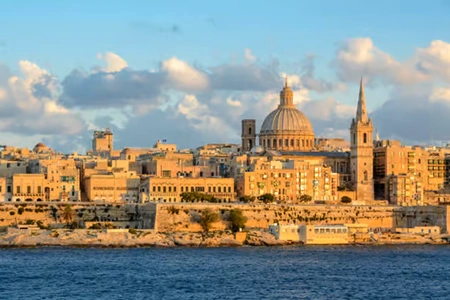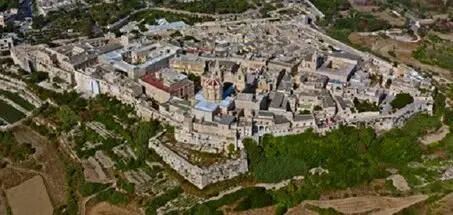Fortification of Mdina
In the northern part of Malta, far from the sea, there is situated a high plateau. Because this part of the hill was good for defens it was already inhabited in the prehistoric times and in the bronze age it was a safe haven.
App info: In our app you will find the location, address, opening hours and admission / entrance fee of this spot. If you use the app, you will find additional information and news about this spot on this page.
The Phoenicians founded Malta's former capital named Maleth on this spot in the 8th century BC.
In 218 BC part of it became part of the Roman Empire and was called Melite. The town Melite (The Punic - Roman ) was surrounded by a 700 metre long wall which was 5 metre thick (16 feet), also including castle moats of 2.3 km long. Melite was three times as big as the present Mdina.
After the downfall of the West - Roman Empire ( state), the city had been made smaller to the present perimeter, so that it was better to defend. There is little left of the original fortification.
The city has twice been defeated, first by the Aghlabids in 870 and then by the French in 1798. In 1091 Medina peacefully surrendered to Roger I of Sicily after a short siege. But the city has also survived several sieges.
The fortifications were rebuilt by the Byzantine Empire in the 8th Century, by the Arabs in the 11th Century and the Kingdom of Sicily in the Middle Ages till the 15th Century. The fortifications, which are now still visible, were mainly built by the Order of Saint John between the 16th and 18th Century and are the best kept fortifications in Malta.
During excavations remains of the Punic - Roman walls of Melite were found, like:
- the city tower which was discovered about 5 metres below the present street level in Saqqajja (Rabat);
- in the neighbourhood of the depots curtain in the west part of Mdina foundations of walls are found which consisted of ashlarblocks, three layers high;
- parts of the ditch were discovered underneath the present street St. Rita and St. Paul’s Church;
- in the Middle Ages the Punic - Roman bricks were re-used and are visible in a wall round the Greek Gate and some Punic-Roman stones which were discovered in Xara Palace , Inguanez Street
There is little found from the Middle Ages Period, only in the inner porch of the Greek Gate some parts of the wall from the Middle Ages are still visible.
Towards the 15th century the bigger part of Mdina's had “enceinte” a system of double walls.
The land front was flanked by four towers:
- at the main gate;
- at the Greek Gate;
- at the Turri di la Camera in the southeast corner of the city;
- in the middle of the land front, called the Turri Mastra (also known as Turri dela bandiera).
Immediately after 1448 a barbican was built at the main entrance of Mdina.
In the year 1450 there were fears of a Barbarijse or Ottoman attack, so efforts were taken to improve the walls of Mdina. The main ditch was completed.
In 1474 the fortress was provided with canons and improved in 1480.
In 1522, in spite of the fact that loopholes were fixed in the walls, the fortifications were considered out of date by lack of bastions and the knowledge that the walls could not resist the many bombs of artillery.
Two bastions were built in 1540.
In the beginning of the 17th Century the main gate was reconstructed and was built in the middle of The Redin Bastion in 1650.
A new city gate was built in 1720, a few medieval towers were being demolished and several restoration works were done.
Towards the end of the 19th Century Mdina was part of the Victoria Lines.
The Gharreqin-gate was opened in 1890 so that there would be an easier connection between the newly built railway station and Mdina.
From 2006 onwards the fortifications and the ditch are considerably restored.







